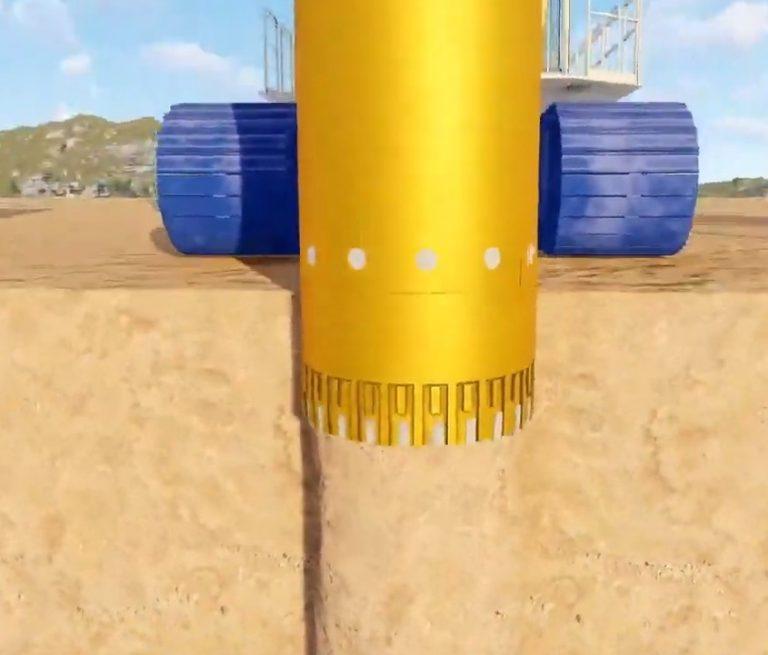Bored piles are a crucial element in the foundation construction of large-scale projects, particularly in areas with complex geology or where high load-bearing capacity is required. In recent years, bored pile technology has seen significant advancements, with various types of piles being employed depending on the specific conditions of the project. Below are the common types of bored piles currently in use:
1. Small-Diameter Bored Piles
Small-diameter bored piles typically range from 0.3m to 0.8m in diameter. These piles are commonly used in residential and industrial projects with low to moderate loads. The advantages of small-diameter bored piles include flexibility in construction, fast execution, and low costs. However, due to their smaller diameter, these piles are only suitable for projects where load requirements are not excessively high.
2. Large-Diameter Bored Piles
Large-diameter bored piles, ranging from 0.8m to 3m in diameter, are widely used in large-scale infrastructure projects such as bridges, high-rise buildings, and industrial structures that require high load-bearing capacity. These piles have a very high load capacity and can be designed to counteract phenomena such as settlement or tilting of structures. However, the construction of large-diameter bored piles requires specialized equipment and advanced techniques, leading to higher construction costs.

3. Continuous Flight Auger Piles (CFA)
Continuous Flight Auger (CFA) piles are constructed by using a continuous flight auger to drill into the ground and injecting cement grout into the hole without removing the auger. This type of pile is commonly applied in areas with weak soils, sands, or in situations where rapid construction is necessary without disturbing nearby structures. CFA piles offer the advantages of quick construction and minimal noise and vibration, but they are only suitable for projects with moderate load requirements.
4. Grouted Piles
Grouted piles are an enhanced type of bored pile where additional cement grout is injected into the surrounding soil after the pile has been drilled and cast. This increases the pile’s load-bearing capacity, particularly in weak or clay soils. Grouted piles are widely used in projects that require high load capacity and also help improve the stability of the foundation.

5. Sand Compaction Piles
Sand compaction piles are a soil improvement method involving drilling a hole and injecting sand to compact the surrounding weak soil. This type of pile is often used in areas with weak soils such as clay or silt, helping to increase the load-bearing capacity of the ground. Sand compaction piles not only strengthen the foundation but also improve the overall stability of the structure, particularly in coastal or soft soil areas.
6. Rigid Inclusion Piles
Rigid inclusion piles are used to enhance the load-bearing capacity of the ground by inserting stiff piles (usually made of cement or concrete) into weak soil layers. These piles help distribute the load from the structure to deeper soil layers, minimizing uneven settlement. Rigid inclusion piles are widely used in construction projects in areas with complex geology, where the ground is weak and prone to deformation.

Applications of Bored Piles
Bored piles are a popular foundation construction solution in the building industry, particularly for high-rise buildings and structures with loads up to thousands of tons. Their applications include:
- Residential buildings and adjacent structures
- Residential homes and properties in narrow alleys
- Hospitals and schools
- Apartment buildings, villas, high-rise buildings
- Hotels and guesthouses
- Large-scale projects like factories, power stations, telecommunication towers, and certain transportation or irrigation projects
- Projects in confined spaces or narrow areas
- High-rise buildings over 8 stories, structures with deep basements, or projects with 2-3 floors of basements or more
- Apartment buildings, shopping centers, office towers
Additionally, bored piles are an effective solution for supporting underground retaining walls. When arranged and designed properly, this system also helps control groundwater movement.
Bored piles play a vital role in ensuring the stability and safety of construction projects, especially in areas with complex geology or high load demands. With the development of construction technology, bored piles have become increasingly diverse and optimized to suit specific project conditions. Selecting the appropriate type of bored pile not only enhances the foundation’s stability but also contributes to the overall success of the project.
Ban truyền thông!


 VN
VN CN
CN KR
KR JP
JP